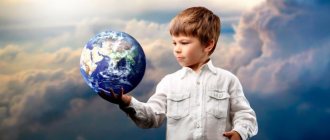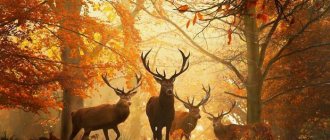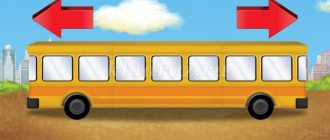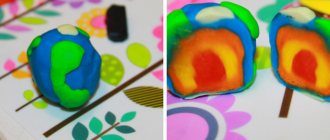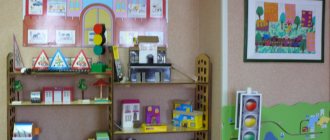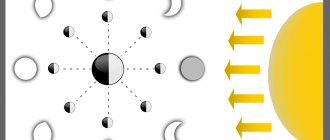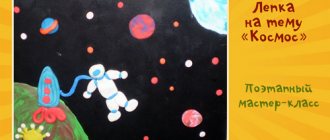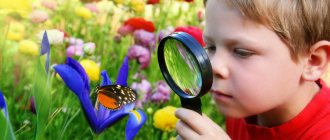Space quiz with answers: primary school
- Name the word that the first cosmonaut of the Earth said before the launch. (Go!).
- What is the name of the path in which our solar system is located? (Milky).
- Who is considered the father of astronautics? (Tsiolkovsky).
- Which country launched the very first satellite of our planet? (USSR).
- In what year did the first artificial satellite launch? (in 1957).
- Name a date that we are all proud of, since it was then that the world's first flight into space took place. (April 12, 1961).
- What are the stars like? (fireballs).
- Who was the first to walk on the moon? (American Neil Armstrong).
- The name of the first spacecraft of the Soviet Union? (East).
- Give the call sign of Valentina Tereshkova (Chaika).
- How long did the flight of cosmonaut Yu. Gagarin last? (1 hour 48 minutes).
- What is the name of the device that travels on our planet’s satellite, the Moon? (Lunokhod).
- Decipher the abbreviation "ISS". (International Space Station).
- What language does the word “cosmos” come from and what does it mean? (from Greek, meaning - orderliness, peace)
- What else did ancient astronomers use to study the stars? (using a telescope)
- What do the terrestrial planets have in common? (they have the same shape and move in orbit around the Sun)
- Who was the planet Neptune named after? (in honor of the god of the seas).
- Name the largest planet (Jupiter).
- Who was the first to design rockets? (Korolev P.S.)
- What was the name of the ancient Greek scientist who first said that the Earth is a sphere? (Pythagoras)
- How many times did the first cosmonaut of our planet fly around it? (one).
- Where do rockets go into space? (from the cosmodrome)
- What celestial body flew to Earth from space in the 20th century? (Tunguska meteorite)
- Which Galaxy is closest to Earth? (Magellan cloud)
- What science studies the Universe? (astronomy).
- Which Russian cosmonaut set the record for 803 days in orbit? (Sergey Krikalev).
- What is the name of the brightest planet that can be observed from Earth (Venus).
- Which planet is considered the coldest? (Pluto).
- What was the name of the goddess of Love, after whom one of the planets was named? (Venus).
- Was there a man on Mars? (No).
Quiz game “Space travel” (grades 1-4)
Game - quiz for students in grades 1-4
"Space trip".
Prepared by Evlashova V.M.
Additional education teacher
MOU DO Palace of Children's and Youth Creativity
Komsomolsk-on-Amur
Target:
introduce children to Cosmonautics Day.
Tasks:
1. Expand children’s understanding of astronautics. 2. To form feelings of patriotism and citizenship. 3.Develop students' creativity, attention, memory, dexterity,
ingenuity through the use of game elements. 4. Organize competitive activities between teams, create
active interaction of students in a team, promote cohesion
class team.
Equipment:
computer, projector, screen, balloons, pens,
sheets of paper, task cards, construction sets, stars, medals for
awards.
Form:
quiz game, competition.
Progress of the event.
Teacher's opening speech.
- Hello guys! I am glad to welcome you! Do you know what holiday the whole world will celebrate? Right. Aviation and Cosmonautics Day.
— Now we’ll talk about how people began to explore outer space. Since ancient times, the mysterious, enigmatic world of planets and stars has attracted the attention of people. Nowadays, people know that the Earth rotates around the Sun and on its axis, but earlier people believed that it was motionless. When our ancestors began to recognize the Earth, they imagined it as an inverted bowl, supported by a giant elephant, standing importantly on the shell of a huge turtle. This turtle swims in the sea-ocean, and the whole world is covered with a crystal dome of the sky with many sparkling stars. (Image demo)
Thousands of years have passed since then. People began to build ships and,
travel around the world, evidence gradually began to accumulate that the earth was not flat, but spherical.
The famous ancient Greek scientist Aristotle (IV century BC)
was the first to prove that the Earth is round. While observing the Moon, he noticed that the shadow from the Earth falling on it is always round. And only the ball casts a round shadow. In addition, he noticed that ships sailing into the distance always disappear over the horizon.
Another great astronomer, Nicolaus Copernicus, proved that the Earth is in space and revolves around the Sun, making one revolution around it every 365 days.
Many years later, people learned to build aircraft, hot air balloons, airships, airplanes and
began to fly in the Earth's air envelope (atmosphere). But people don't
They stopped there, they were attracted by space. — Guys, what is astronautics? (children's answers)
Cosmonautics
is a set of branches of science and technology that ensure the exploration of outer space and extraterrestrial objects.
— Tell me, who was the first person to fly into space? (children's answers) Correct, Yuri Alekseevich Gagarin
. On April 12, 1961, a citizen of the USSR, Yuri Alekseevich Gagarin (portrait), flew into space. The name of this man is known all over the world. Since childhood, Yura has been interested in airplanes. He was very inquisitive and grasped everything
fly. At the age of 15 he entered a vocational school. But passion
aviation attracted him, and he entered the military aviation school.
He was a brave, resourceful, cheerful man. Rarely got angry and didn't really
He loved quarrels; on the contrary, he made peace with everyone with jokes and laughter. He was attentive to his comrades and helped them in everything. He was perfectly prepared physically. On April 12, 1961, the Vostok rocket flew around our planet in 108 minutes (1 hour 68 minutes). The world held its breath. The world listened to the voice of man,
flying over oceans and countries, and people in these countries repeated:
"Gagarin", "Yuri", "Russia". The earth recognized a simple, charming man who paved the way to the stars. Therefore, on April 12 we celebrate ‹‹Cosmonautics Day››.
Our event is dedicated to this holiday.
-Now you will be divided into two teams and will compete in courage,
dexterity, dexterity and ingenuity. For victories in competitive tasks you
you will receive stars, at the end of the event we will sum up the results and reward
teams. (team formation)
Task No. 1. Warm up. The task is to come up with a name and motto for the team.
- Guys, do you know what “space” is?
(children's answers) In general, space
is a space that extends endlessly into everything
sides, including galaxies and stars, black holes and planets,
cosmic dust and other objects. -Today we will travel into outer space. But for
For this we need a rocket. Task No. 2. Rocket structure. Teams are given a constructor. The task is to assemble a rocket and give it a name (“Apollo”, “Vostok”, “Soyuz”, “Mir”, ...).
-Our missiles are ready, we need a captain.
We choose a captain. -And now I’ll tell you interesting facts. Well, now we can go. Good luck! Stop #1.
Mars. Planet Mars is one of the smallest planets in our Galaxy. Mars is the fourth from the Sun. According to scientists, this is the only celestial body on which life could exist. After all, in the past on the surface
the planet had water. This conclusion can be drawn based on the fact that
large ice caps exist at the poles, and the surface is covered
with many furrows that could have been dry river beds. - Look, they left us a letter on this planet! Only it
encrypted. Task No. 3.
Encrypted letter. The team's task is to decipher the letter. Teams are given letters. The cipher and the encrypted letter itself are written on the sheet.

(Help! We have an accident! Our ship crashed on the planet
Mercury.) - We need to help the people whose ship crashed on Mercury. A
To get on it and help the team, we need to answer questions. Task No. 4. Questions. The goal is to answer the question faster than your opponent. The teacher reads the questions and the children answer. Questions: 1. Earth satellite? (Moon) 2.What was the name of the man who made the first flight into space and
returned safely? (Yuri Alekseevich Gagarin) 3. What is the smallest and most distant planet from the Sun? (Neptune, Pluto lost their “planet” status)) 4. How many planets are there in the solar system? (8 planets) 5.List the planets of the solar system? (Mercury, Venus, Earth,
Mars, Jupiter, Saturn, Uranus, Neptune) 6. What was the name of the ship on which Yuri Gagarin made his first flight into space? (“Vostok - 1”) 7.Which planet is named after the goddess of love? (Venus) 8. Name the names of dogs that flew into space before people and which
returned safely? (Belka and Strelka) 9.What was the name of the first female cosmonaut who flew into space? (Valentina
Tereshkova) 10. How do astronauts eat food? (using tubes) - Well done! Let's continue our journey! Stop #2. Jupiter. Jupiter, the fifth planet, is the largest. In volume
Jupiter would fit 1,300 Earth-like planets, and its mass is 317 times that of Earth. Basically this planet
consists of gas, the only solid part is the rocky core.
- Guys, in order for us to go from Jupiter to another planet, we will have to find the lost words. Task No. 5. Find the words hidden in the letters. The teams' task is to find 6 words in the table, plus a point for two additional words. The teams are given cards showing the following table.
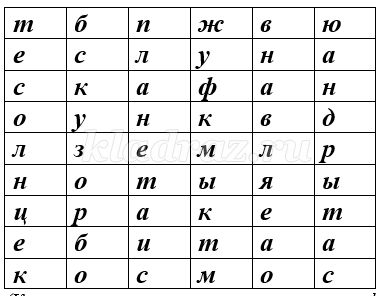
(Space, sun, planet, earth, rocket, spacesuit, orbit, moon) -We continue the journey. Stop #3. Saturn. It is the second largest gas giant, named after the ancient god of agriculture. It consists of hydrogen and helium, but on its surface there were
Traces of methane, ammonia and water were found. The most important feature
Saturn is characterized by the presence of bright rings. The four rings of Saturn are the most...
amazing phenomenon in the solar system. What is unusual is that the internal
the rings move faster than the outer rings. - Guys, our next task is to solve riddles. Task No. 6. Puzzles. The team's task is to solve as many riddles as possible. The teacher reads riddles, the children guess. Riddles: 1. An object flies through the thickness of the Ice years in space. Its tail is a strip of light, And the name of the object is... (Comet) 2. A man sits in a rocket. He boldly flies into the sky, and in his spacesuit he looks at us from space. (Cosmonaut) 3. The blue cloth is nailed down with golden nails. (Stars in the sky) 4. The very first in space Flew at great speed A brave Russian guy, Our cosmonaut... (Gagarin) 5. The blue planet, Beloved, dear, She is yours, she is mine, And it’s called... (Earth) 6. I was walking past, I saw a miracle - A round dish hanging in the sky. (Moon) 7. Above the forest, above the mountains, a carpet spreads. It is spread out over you and over me, Sometimes it is gray, sometimes it is blue, sometimes it is bright blue. (Sky) 8. Consists of points of light, The room of planets is full. (Space) - Let's fly further! Stop number 4. Uranus. The seventh planet from the Sun is Uranus. She's the coldest of them all
the temperature drops to -224 °C. Uranus belongs to a separate category of ice giants.
An amazing feature of this celestial body is that it rotates
it lying on its side. Like all giant planets, Uranus has rings and many satellites. As many as 13 rings
orbits around it, but they are not as bright as Saturn's,
the planet supports 27 satellites. - Look, all the letters are mixed up. Aliens probably don't know
Russian language. You need to put the consonants and vowels like this. To make words. Task No. 7. Changelings. The team's task is to form words. Teams are given cards with words. Changeling words: SOSMK - space ANAFKSDR - spacesuit IDONAMUG - humanoid ATIORB - orbit ONAVTKOSM - cosmonaut TSEOLSN - sun - Well done, they put things in order in the letters. We fly further. Stop No. 5. Neptune. Neptune is surrounded by bright blue clouds. It is distinguished by the violence of the strongest hurricanes, the speed of which often reaches the size of a couple in an hour.
thousand kilometers. All the winds blow the planet along the equator,
towards her movement. — On this planet we will solve a crossword puzzle. Guys, here you will need to think a little, but who was attentive quickly with this
will handle it. And only after this we will be able to fly to Earth, home. Task No. 8. Crossword. The team's task is to solve the crossword puzzle. The teacher distributes crossword puzzles, the children solve them. Questions (horizontally): The key word is UNIVERSE. 1.Is it a rock or metal block moving around the Sun? (Asteroid) 2. The largest planet in the solar system? (Jupiter) 3. Earth's satellite? (Moon) 4.The only planet in the solar system that rotates counterclockwise? (Venus) 5. Is there artificial and natural? (Satellite) 6. What is the coldest planet? (Uranus) 7. A celestial body of small (by cosmic standards) size, consisting of ice, dust and metal inclusions? (Comet) 8. The planet we live on? (Earth)
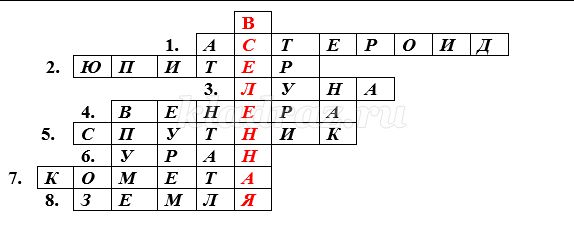
-Well done boys. We completed the task. Stop number 6. Earth. The only place in the solar system, and indeed in the entire known
to astronomers, the universe where life exists is planet Earth. Task No. 9. Complete the word. The team's task is to unravel the words. The teacher distributes cards, the children solve the words.
(1. Space. 2. Space suit. 3. Airplane. 4. Cosmonaut.)
-Well done boys! We completed all the tasks and returned to Earth. - And now we will sum up our journey (points are counted). Children are awarded medals (winner medal, participant medal).
Quiz about space with answers: for preschoolers
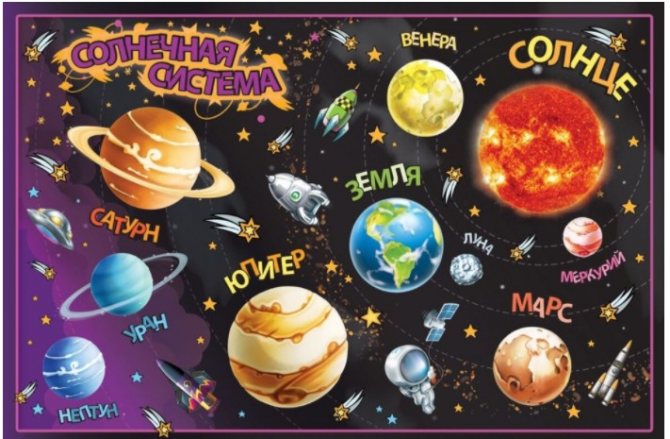
- What planet do we live on? (on the ground).
- What color does our Earth appear from space? (blue).
- How does the Earth move in space? (orbits the Sun)
- Name the planets that move in orbit around the Sun? (Mercury, Venus, Mars, Jupiter, Uranus, Neptune, Saturn).
- Which satellite of our planet is visible in the sky at night? (Moon).
- Which astronaut was the first in the world to fly into space? (Gagarin).
- What are the names of the dogs that flew around the Earth and then landed safely on it? (Strelka and Belka).
- What does an astronaut wear on a flight? (in a spacesuit).
- What is the name of a spacecraft with an astronaut on board? (rocket).
- Do astronauts use utensils in space - forks and spoons?) (no, all their food is in tubes).
- Name the day, month and year when we began to celebrate Cosmonautics Day (April 12, 1961)
- What animals were launched into space besides dogs? (rats and monkeys).
- Which astronaut was the first to go into outer space? (Leonov).
- Where do rockets launch into space? (from the cosmodrome).
- Which planet is surrounded by rings? (Saturn).
- Which woman was the first to go into space? (Tereshkova)
- Our planet is surrounded by a thick layer of air, what is it called? (atmosphere).
- What is the name of the “country” where planets and many stars live? (Universe).
- One of the planets is red, what is it called? (Mars).
- What is the name of the path along which planets, satellites, and spaceships move? (orbit).
Space Quiz: For High School Students
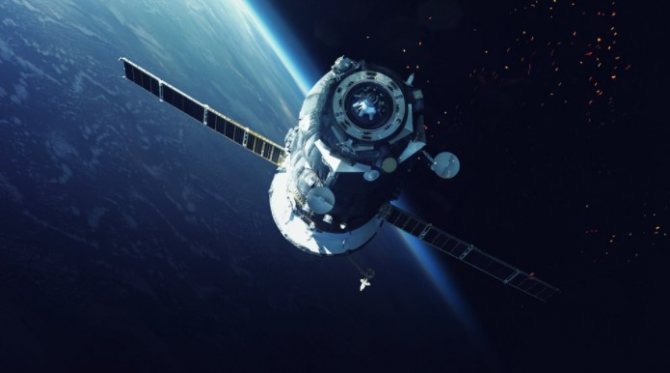
- Name the gas giant planets (Neptune, Uranus, Saturn, Pluto).
- Which celestial body was considered a planet, but was subsequently excluded from this list? (Pluto).
- How to distinguish a star from a planet with the naked eye? (stars have a blinking light, while planets have a steady light).
- What is the largest size - the Galaxy or the Universe? (The Universe, since the Galaxy, is part of it).
- How often are new stars born? (every 20 days)
- What is the name of a rock formation that flew to Earth from space? (Meteorite).
- What color is a cool star? (red)
- What celestial body has a “tail”? (comet).
- After what cosmic phenomenon do black holes appear? (after the stars explode)
- If you go to the moon, will you be able to determine the cardinal directions using a compass? (no, since there is no magnetic field on the Moon).
- Where is the force of gravity less, on the Moon or on Earth? (on the moon)
- What size was the first satellite of our planet? (58 cm).
- Not all stars are the same color, what does this depend on? (depending on the temperature of the star).
- What color is the hottest star? (blue, silver or white).
- What celestial bodies are the planets - cold or hot? (to cold ones).
- Name the satellites of the planet Mars (Deimos, Phobos).
- What is a star? (a sphere of hot gas).
- On what planet does the year last 88 days? (on Mercury).
- What Galaxies do you know, if we talk about their type? (spiral, elliptical and irregular).
- Which planet has more satellites than other satellites? (Jupiter)
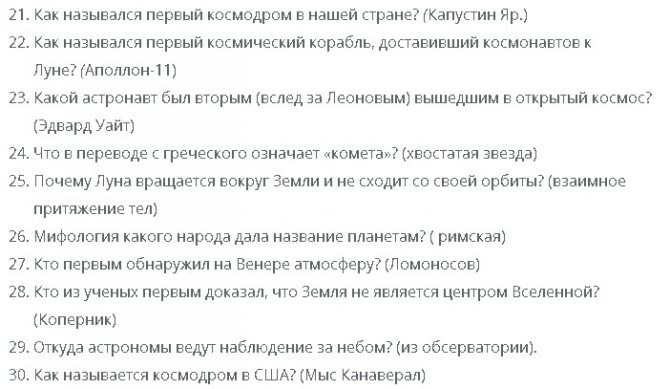
Quiz about space: for adults
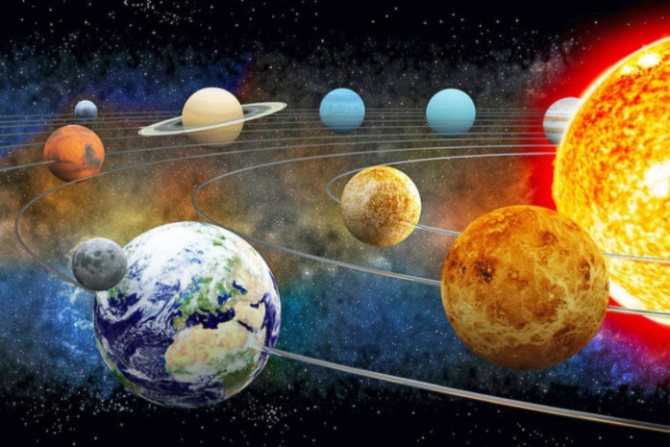
- Name the spaceship that exploded after 74 seconds in 1986? (Challenger).
- Which interplanetary automatic stations were involved in research into Comet Halley and Venus and in what year? (Vega station, in 1984-1985)
- Who was the first to see the sky through a telescope and in what year? (in 1610, it was Galileo Galilei)
- Are there such things as shooting stars on the Moon? (there is no such phenomenon on the Earth’s satellite, since this is an atmospheric phenomenon)
- Describe asteroids (These are cosmic bodies between Jupiter and Mars, called small).
- In which constellation of Ursa can the North Star be observed? (In Malaya).
- What is special about variable stars? (their shine tends to change).
- There is a galaxy in the northern hemisphere that can be seen without a telescope, what is it called? (Andromeda's nebula).
- What's the difference between a star and a planet? (the planet reflects light, and the star is self-luminous).
- Name the difference between a refracting telescope and a reflecting telescope (a reflector has a mirror lens, while a refractor has a lens).
- Who discovered the law of planetary motion? (by Johannes Kepler)
- “Ecliptic”, what is it and what constellations does it pass through? (The imaginary line along which the Sun passes its path through the zodiac constellations throughout the year).
- Which moons of Jupiter are called Galilean? (Callisto, Europa, Io, Ganymede).
- What type of galaxy is our solar system? (spiral).
- Where is the largest telescope in the world? (in Zelenchuk in the North Caucasus).
- In the atmosphere of which planet did scientists discover the ozone layer (except Earth)? (in the atmosphere of Mars).
- Which bodies in the solar system have the strongest magnetic fields? (at Jupiter and the Sun).
- Is it possible to observe a total lunar eclipse in the daytime? (impossible, since during this phenomenon the Earth, along with the Sun and Moon, is on the same straight line).
- What kind of rain happens on Venus? (from sulfuric acid).
- “Morning star” - this is what Venus is called when it is in a certain phase, name it? (last quarter).
- What name was given to the tallest mountain on Mars? (Olympus).
- What types of meteorites are there? (iron-stone, iron, stone).
- Who was the first to determine the speed of light? (to American Michelson).
- At what distance from Earth is the highest concentration of ozone in the atmosphere observed? (from 20 to 25 km).
- Is it possible to light a match on the Moon? (this is impossible, there is no oxygen).
- Which star is the brightest in the sky? (Sirius).
- Which planet differs from others in the direction of rotation? (Venus).
- What was the first vegetable grown in space? (potato).
- There are also planets outside the solar system, what are they called? (exoplanets).
- Name the first tourist to fly into space (Dennis Tito).
Quiz Stars in Space
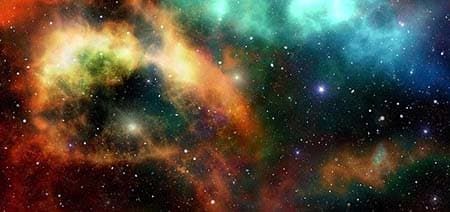
Tests allow you to learn more about bright stars and constellations.
The quiz is designed for a wide range of audiences.
1. Where did the expedition with young cosmonauts go from Moscow, in the Soviet film of the same name?
+ Cassiopeia Orion Phoenix
2. What constellation is depicted on the state banner of the Commonwealth of Australia?
Southern Crown of the Bird of Paradise + Southern Cross
3. How many stars does the Bucket unit in the constellation Ursa Major?
Five + Seven Nine
4. Who is the author of the famous science-fiction-futuristic novel telling about space adventures in the Andromeda nebula?
A. Azimov + I. Efremov S. Lem
5. Where are the three stars concentrated that are at the minimum distance from the Sun?
Bootes + Centaurus Auriga
6. What is the name of the dark nebula that is clearly visible against the background of the Milky Way?
+ “Coal Bag” “Smoke Stack” “Black Cuttlefish”
7. What queen’s name does the group of stars that resembles a woman’s curls have?
Varvara's Braid Elena's Curls + Veronica's Hair
8. How many constellation silhouettes are there on the blue circle in the central part of the Brazilian flag?
3 + 9 12
9. With the appearance in the sky, which bright star in Ancient Rome announced the beginning of summer vacation for students - vacation?
+ Sirius Antares Altair
10. From what constellation did the puppy nicknamed Puppy, the hero of the story of the same name by L. Nemenova, move to Earth?
Great Dog Wolf + Hound Dogs
